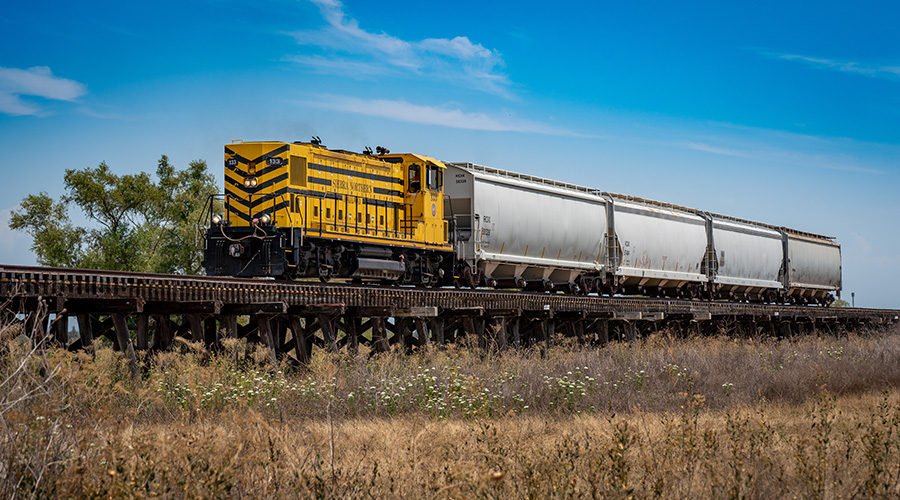Stay updated on news, articles and information for the rail industry
June 2011
Rail News: High-Speed Rail
California HSR officials contend with criticism
By Angela Cotey, associate editor
As the U.S. Department of Transportation (USDOT) addresses high-speed rail program funding, uncertainty and criticism at a national level, many states are dealing with the issues at a local level as they work to advance planning and construction on various projects. And no state has been on the receiving end of more funding — and more critiques and complaints — than California.
When the USDOT redirected Florida’s high-speed funds in May, the department awarded $300 million to the California High Speed Rail Authority (CHSRA), bringing the total federal commitment to California’s HSR project to $3.5 billion. CHSRA is matching the funds with state dollars, raising the total money available for the project to $6.3 billion.
CHSRA will use most of the funds to launch construction on the backbone of the 800-mile system in the Central Valley between Bakersfield and Fresno. Launching construction in the Central Valley makes the best use of the money that’s available for HSR construction, and meets the requirements attached with the stimulus dollars, authority officials believe.
CHSRA has gotten a lot of flak for its choice because the Central Valley is much more sparsely populated than other metropolitan areas. However, at this point, the Central Valley segment was the only one that made sense, says CHSRA Deputy Director Jeff Barker.
“If you put a couple billion [dollars] into a system between San Francisco and San Jose, you have regional commuter rail — which, by the way, already exists there,” he says. “People ask why we don’t build L.A. to Anaheim? Well, it’s only 30 miles and then you’re not building high-speed rail. You’ve got a small commuter-rail line that people won’t ride in great numbers, that’s not profitable and not long enough to reach high speeds.”
Instead, CHSRA will focus on building nearly 150 miles of initial track, then extending it to 200 or 250 miles as more funding becomes available. Once the first segment is complete, CHSRA can build the line out to the north and south to connect with other major metropolitan areas.
“You’ll never have high-speed rail in California if you can’t connect north to south and in order to do that, you need that huge piece of infrastructure through the Central Valley,” says Barker.
For CHSRA officials, it has been (and will continue to be) key to stick to their plans and not succumb to local pressures to build the system in a different location — and to take the time to make sure it’s done right.
“People have an urge to see something now. But it’s going to take more money and more time, and it will require people to be patient and keep the larger vision in mind,” says Barker. “We’re trying to resist the pressure to show some immediate results because anything immediate and short term is not going to support high-speed rail overall.”
Private eyes
But for CHSRA to achieve its larger vision, the authority will need tens of billions of dollars in additional funding — federal dollars included. The uncertainty surrounding the near- and long-term prospects for federal funding don’t affect CHSRA’s “day to day,” but it could impact the private sector’s willingness to pony up funds to help California build its sprawling system, says Barker.
“It’s a little bit ironic because there are a lot of people, especially in Congress, saying they want private-sector participation, but private firms right now are seeing volatility and political strife, and that’s not an environment in which the private sector will want to participate,” he says.
That’s why it’ll be critical for Congress to create a program to fund high-speed rail on an ongoing basis. And as long as the private sector is confident the federal government will pony up more funds for HSR development, there are plenty of firms interested in securing a stake in California’s project.
In March, CHSRA issued a request for expressions of interest, seeking feedback from private companies that wanted to participate in any and all aspects of the state’s HSR project. The authority received more than 1,000 responses, about two dozen of which said they were interested in helping to finance the system, Barker says.
During the past several weeks, CHSRA has been meeting with some of the companies to discuss financing specifics.
“We’re probably going to do an RFQ in summer and that would be the beginning of the procurement process, so we want to make sure that when we do go to bid, we do it in a way that works for people and allows the most companies possible to bid and compete,” says Barker. “We want to know what conditions would make this most palatable to them, seeing how large of a bid package companies can handle to determine if we should bid out all $6 billion or break it into much smaller pieces.”
CHSRA plans to begin seeking bids in early 2012.


 2025 MOW Spending Report: Passenger-rail programs
2025 MOW Spending Report: Passenger-rail programs
 Gardner steps down as Amtrak CEO
Gardner steps down as Amtrak CEO
 Guest comment: Oliver Wyman’s David Hunt
Guest comment: Oliver Wyman’s David Hunt
 Women of Influence in Rail eBook
Women of Influence in Rail eBook
 railPrime
railPrime




